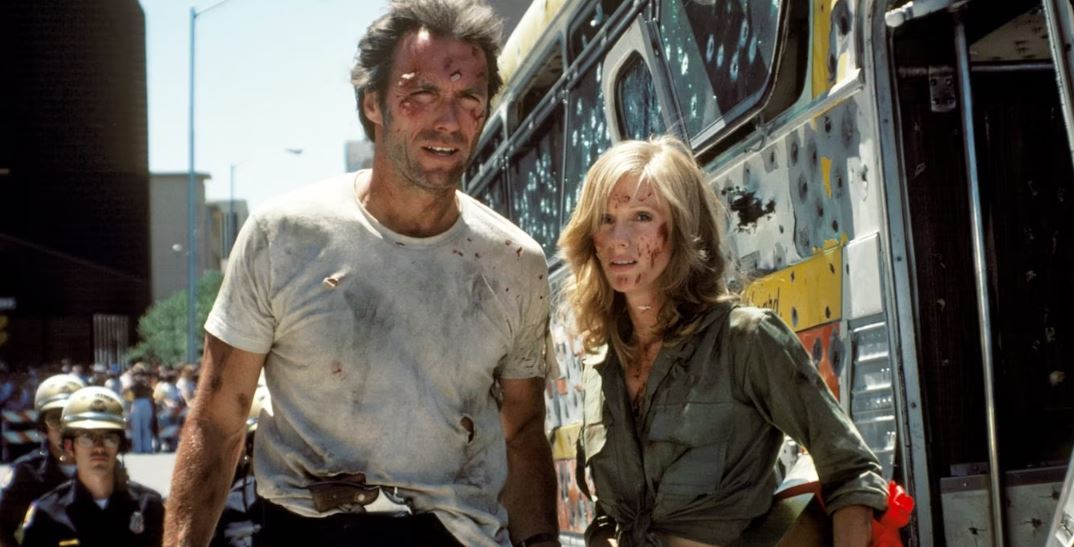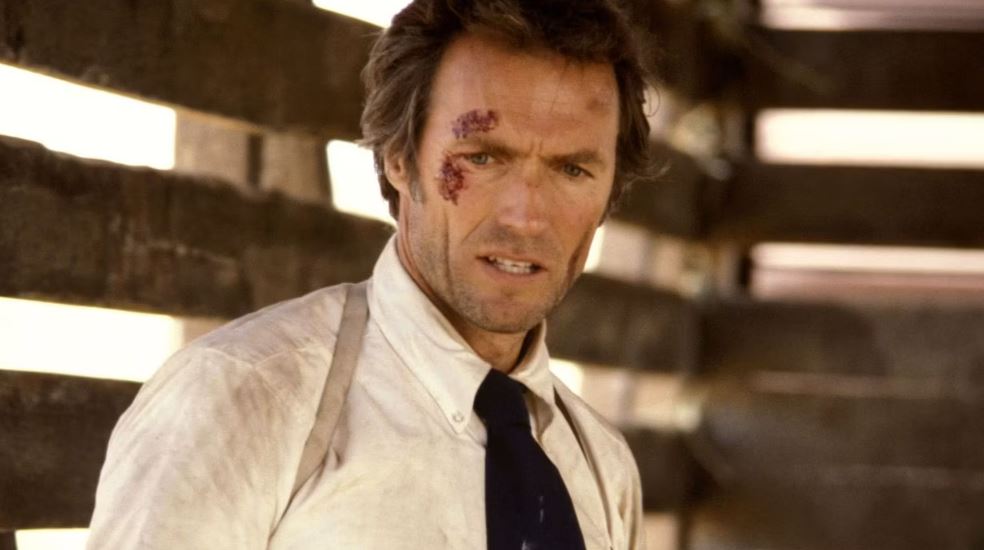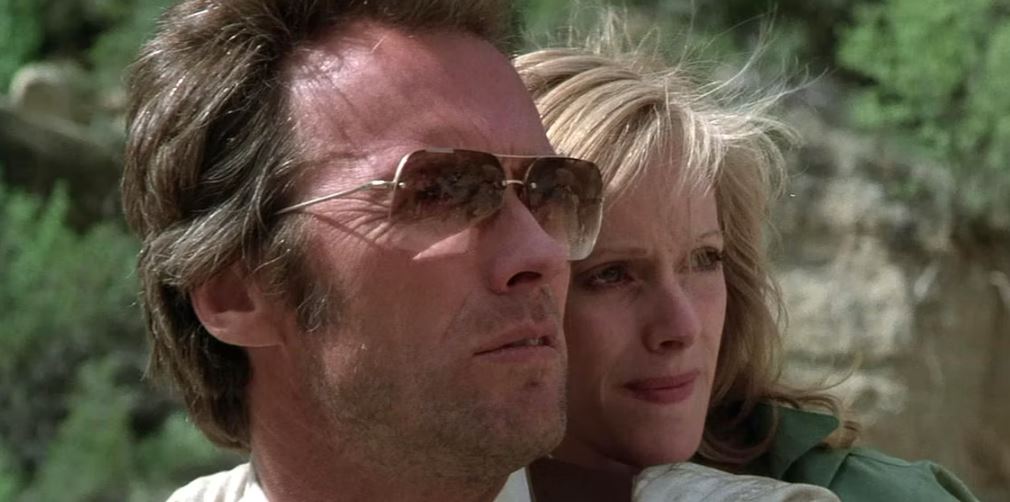The year was 1977, and it was a particularly interesting year in Clint Eastwood’s life. He was in the midst of a drastic image change, brought upon by his irritation with critics’ perceptions of him and his characters. The Gauntlet was filmed that same year and the result was representative of his perpetual metamorphosis. Eastwood loved to play around with his mythos, and the action thriller film interestingly becomes personal, as it mixes aspects of his real-life turmoil and the cultural shift the world was entering.
What Is ‘The Gauntlet’ About?
In The Gauntlet, Clint Eastwood plays Ben Shockley, a Phoenix cop who has an affinity for both alcohol and violence. He is asked to escort Gus Mally (Sondra Locke), a witness for something very important, to Vegas. Mally is hesitant about this move, as she suspects that they are both being set up by an unseen force. While Shockley dismisses this suspicion, Mally then reveals that she is a sex worker affiliated with the mob, and knows some pretty damning information about someone very high in the societal totem pole. When the two are attacked in Gus’ home, their suspicions are confirmed.
The two are chased around the state and are marked as fugitives by the local authorities. It is eventually revealed that it was the Police Commissioner, Edgar Blakelock (William Prince), who wants them dead because he is the one Gus has secrets on. After several misadventures, the two realize that fighting the commissioner head-on is the only way to prove their innocence. They hijack a bus and enter Phoenix when an old friend of Shockley’s warns them of their impending doom. A gauntlet of police officers is waiting for them, headed by none other than Blakelock. They run through the entire army of officers and proceed to prove their innocence in the midst of the heavy fire. Blakelock is subsequently killed by Gus, and the picture ends with the two walking into the sunset, free from any sin.
Clint Eastwood Criticizes Himself in ‘The Gauntlet’

Despite his success with his earlier gun-slinging characters, Clint Eastwood’s portrayals were often met with razor-sharp criticism. The acclaimed film critic Pauline Kael’s sharp assessments plagued Clint, with her commentaries slowly but surely becoming more and more scathing. The filmmaker decided to fight back with the weapon he knew best to wield: the moving picture. Clint Eastwood was on a mission to remove all the clichés about his performances. Refusing Sergio Leone’s Once Upon a Time in the West was the first step to this strategy, and the rest would come at his own hands. This perpetual wish to avoid putting his characters and his own auterial strokes in a box became his calling card, one that is evident until the latest of the director’s films.
Clint Eastwood, because of his rising stock, had the ability to exercise some bit of creative control over the characters, even if he wasn’t the director per se. When Dirty Harry was derided by critics like Pauline Kael as fascist and dictatorial in his approach, Magnum Force artistically separates the character from the assumption. When people thought of his characters as chauvinist and misogynist, the feminine spirit of The Enforcer came to dismiss those claims. When critics constantly pushed that he couldn’t reinvent himself and was limited to mindless action flicks, the duality of High Plains Drifter and Pale Rider, together with the absurdity of Every Which Way but Loose gleefully destroys that idea. The Gauntlet is an interesting piece in this regard, since it willfully criticizes the critics and himself, particularly in one telling scene 20 minutes into the film.
‘The Gauntlet’ Mirrored Clint Eastwood’s Real-Life Drama
It would seem that the sequence where Ben Shockley and Gus Mally are seeking refuge in the latter’s home and are subsequently fired upon by the authorities is rudimentary. However, it is actually representative of Eastwood and Locke’s real-life situation, while simultaneously offering a commentary on real-life situations. Bernard Benoliel posits in Masters of Cinema: Clint Eastwood that the shootout was inspired by the infamous assault of the LAPD on the hideout of the Symbionese Liberation Army (SLA) in 1974 in downtown Los Angeles. In real life, it mirrors a world that is in serious conflict with terrorists and liberation militias. In the context of Clint Eastwood’s personal affairs, it was indicative of his affair with his co-star Locke.

When word of their relationship got out, Eastwood was on the receiving end of mudslinging efforts left and right, which was causing his marriage, and his own mind, severe harm. Benoliel further exclaims that in this sense, the image of him and Locke seeking refuge while being rained upon by ammunition becomes both metaphorical and poetic. They are trapped and are continuously riddled with bullets. It is pretty symbolic that by the time the film came out, the rumors surrounding Eastwood’s marriage were starting to reach their fever pitch. The only way out was to face people with the truth, as the climactic point of the film points out. It would appear that the film was in full dialogue with his future decisions, as they decided to come out clean about their affair shortly after The Gauntlet’s release. By 1979, Eastwood and his wife Maggie Johnson formally called off their marriage. Life often imitates art as they say, and this is one of the most fascinating examples.
Where Does ‘The Gauntlet’ Lie in Clint Eastwood’s Filmography?
The Gauntlet’s place in the Clint Eastwood cinematic library is a pretty interesting one. It is far from his best works, nor should it be placed at the very bottom of the D list. It has its own captivating qualities and is most certainly enjoyable, but it does not have the polished strokes viewers will soon come to expect from the filmmaker. However, the mark that it has left is certainly more personal than anything else. Eastwood was marred by criticism, both deserved and undeserved, but he chose to reinvent himself rather than wallow in misery. It is a stark reminder of a tumultuous period in Clint’s life and is a picturesque example of a filmmaker starting to get acquainted with a vision that will last for decades to come.
The Gauntlet is available for rent or purchase on Amazon Prime Video in the U.S.
